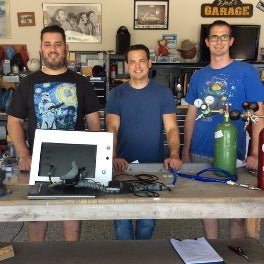
Students Christopher, Alvaro and Steven with the National University DEN, examined the consequences of increased CO2 and O2 deprivation leading to hypoxia related symptoms among F-35 fighter pilots.
In understanding that the lives of pilots in aircraft are at risk with potentially fatal results, pilot safety is key to the success of the F-35 jet programs, as well as all fighter jet programs.
Hypoxia is an ongoing issue and many deaths have occurred, due to increased oxygen-physiological incidents.
The students from the National University determined that the main focus of their research would be on the F-35 fighter pilot's oxygen mask along with the O2 levels being delivered to the pilot and used the CO2Meter CM-42951 0-25% O2 UV Flux Oxygen Smart Sensor to be incorporated and further their study.
In the initial research findings above, provided by the CO2Meter GasLab Software and UV Flux 25% Oxygen Smart Sensor, the engineering team were able to review further details which displayed the complications of the overall oxygen system.

Through the process, it was determined that the focus of the solution of the problem should not revolve around what the system has that was not working correctly, but instead what the system was currently lacking.
By developing and reviewing the dangers associated with CO2 and O2 the team was able to derive the importance that should be associated with the ability to dictate and mitigate the amount of deadly gas that can be associated with CO2.
In further exploration, the overall study gave message that would ensure air quality is more than acceptable at any given altitude for any type of pilot. By understanding that the current OBOGS (On Board Oxygen Generation System) that is put in place to ensure the safety of the pilot was not guiding and producing the proper air transfer and quality of air that is ideal for any situation.
By further review the team was able to understand the changes that should be made to the measuring devices that would encompass any air that is derived, and stress that with proper funding and more advancement in technology such as 3D printing of prototypes and laboratories; the full simulations could transpire with the use of the mask on a live human and this would show what an actual prospective pilot would encounter.
Studies and advancements such as this one, is what broadens the horizon for the issues witnessed with the F-35 fighter jets and pinpoints a special focus designated towards the details that surround the oxygen mask deficiency with the pilots today.
For more information on the National University DEN research study, view the capstone project video, here.






